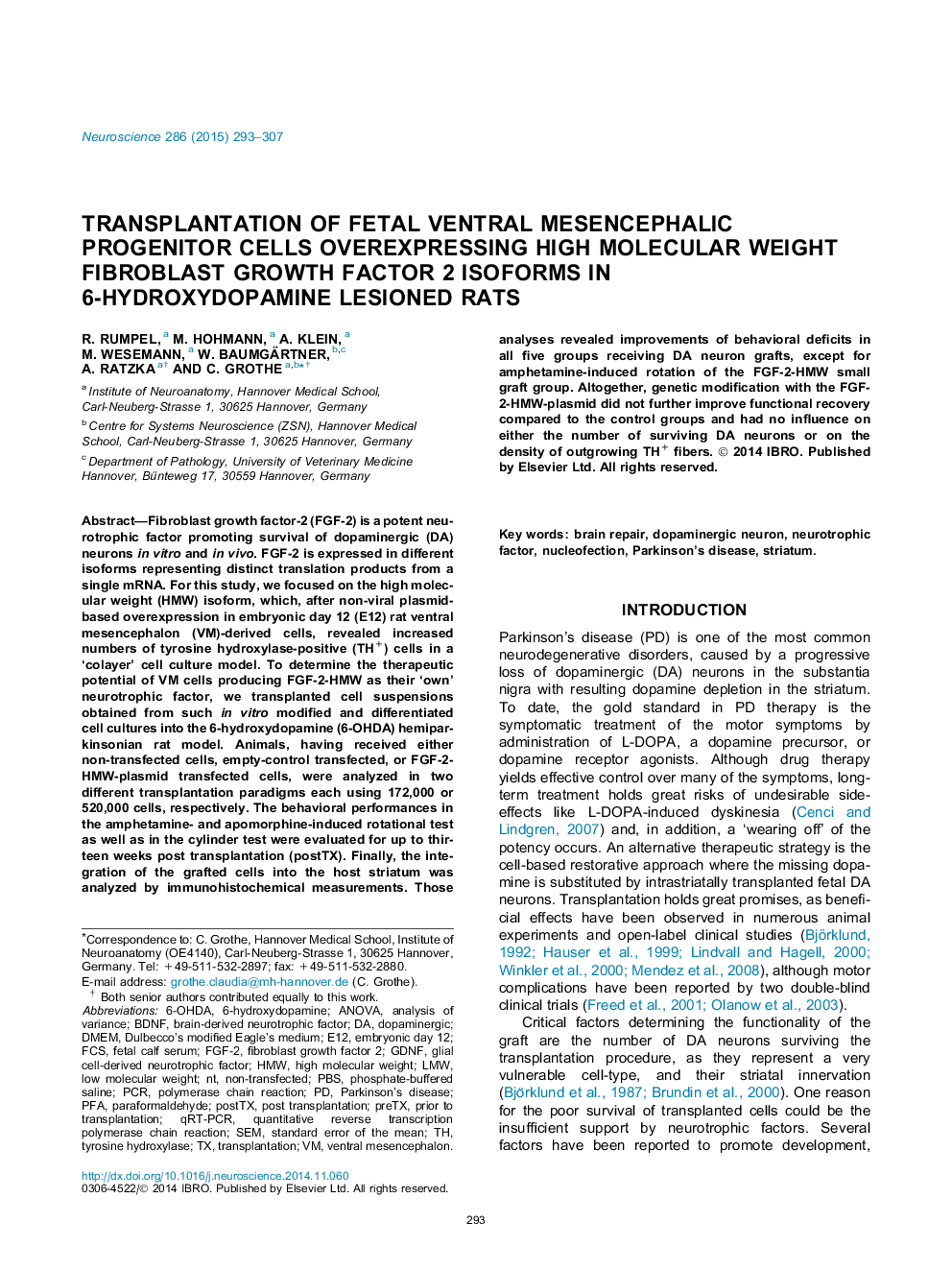| Article ID | Journal | Published Year | Pages | File Type |
|---|---|---|---|---|
| 6273136 | Neuroscience | 2015 | 15 Pages |
Abstract
Fibroblast growth factor-2 (FGF-2) is a potent neurotrophic factor promoting survival of dopaminergic (DA) neurons in vitro and in vivo. FGF-2 is expressed in different isoforms representing distinct translation products from a single mRNA. For this study, we focused on the high molecular weight (HMW) isoform, which, after non-viral plasmid-based overexpression in embryonic day 12 (E12) rat ventral mesencephalon (VM)-derived cells, revealed increased numbers of tyrosine hydroxylase-positive (TH+) cells in a 'colayer' cell culture model. To determine the therapeutic potential of VM cells producing FGF-2-HMW as their 'own' neurotrophic factor, we transplanted cell suspensions obtained from such in vitro modified and differentiated cell cultures into the 6-hydroxydopamine (6-OHDA) hemiparkinsonian rat model. Animals, having received either non-transfected cells, empty-control transfected, or FGF-2-HMW-plasmid transfected cells, were analyzed in two different transplantation paradigms each using 172,000 or 520,000 cells, respectively. The behavioral performances in the amphetamine- and apomorphine-induced rotational test as well as in the cylinder test were evaluated for up to thirteen weeks post transplantation (postTX). Finally, the integration of the grafted cells into the host striatum was analyzed by immunohistochemical measurements. Those analyses revealed improvements of behavioral deficits in all five groups receiving DA neuron grafts, except for amphetamine-induced rotation of the FGF-2-HMW small graft group. Altogether, genetic modification with the FGF-2-HMW-plasmid did not further improve functional recovery compared to the control groups and had no influence on either the number of surviving DA neurons or on the density of outgrowing TH+ fibers.
Keywords
E12LMWqRT-PCRHMW6-HydroxydopaminePFAFGF-2DMEMFCSPBSGDNF6-OHDABDNFventral mesencephalonStriatumParkinson’s diseaseanalysis of varianceANOVABrain repairtyrosine hydroxylasestandard error of the meanDopaminergicfetal calf serumfibroblast growth factor 2Neurotrophic factorBrain-derived neurotrophic factorglial cell-derived neurotrophic factorPhosphate-buffered salineDulbecco’s modified eagle’s mediumSEMDopaminergic neuronNucleofectionquantitative reverse transcription polymerase chain reactionpolymerase chain reactionPCRhigh molecular weightlow molecular weightparaformaldehydeTransplantation
Related Topics
Life Sciences
Neuroscience
Neuroscience (General)
Authors
R. Rumpel, M. Hohmann, A. Klein, M. Wesemann, W. Baumgärtner, A. Ratzka, C. Grothe,
